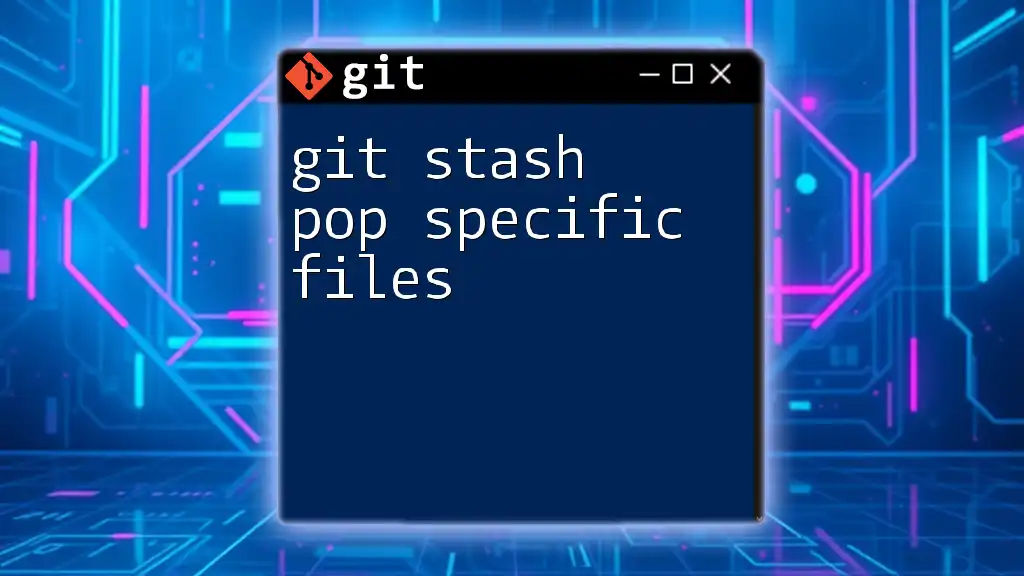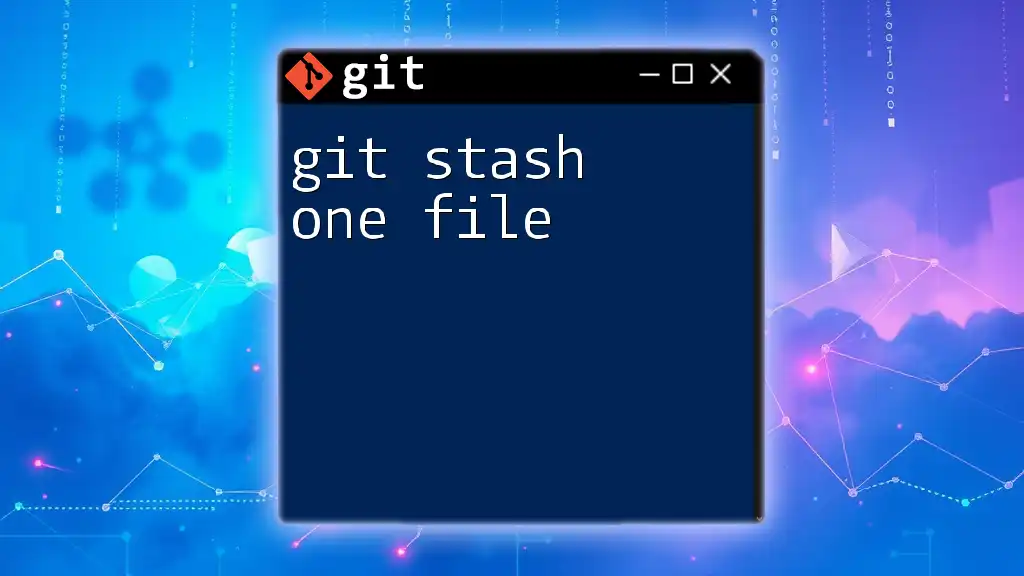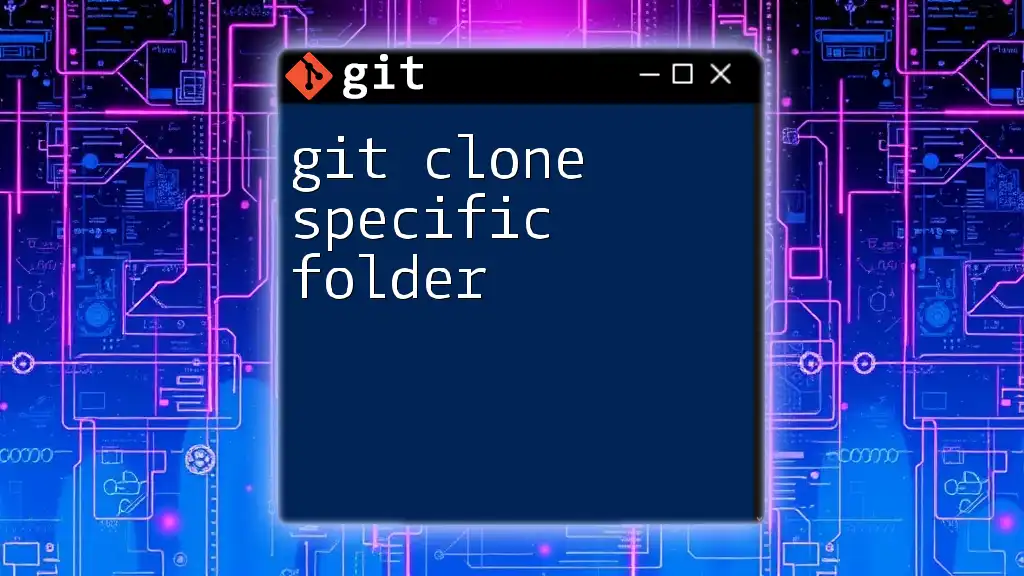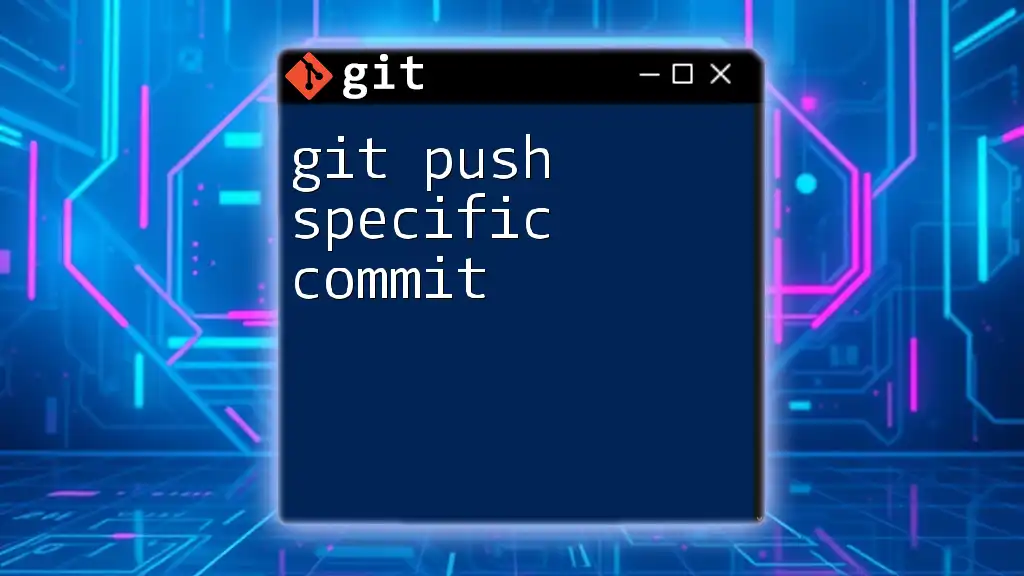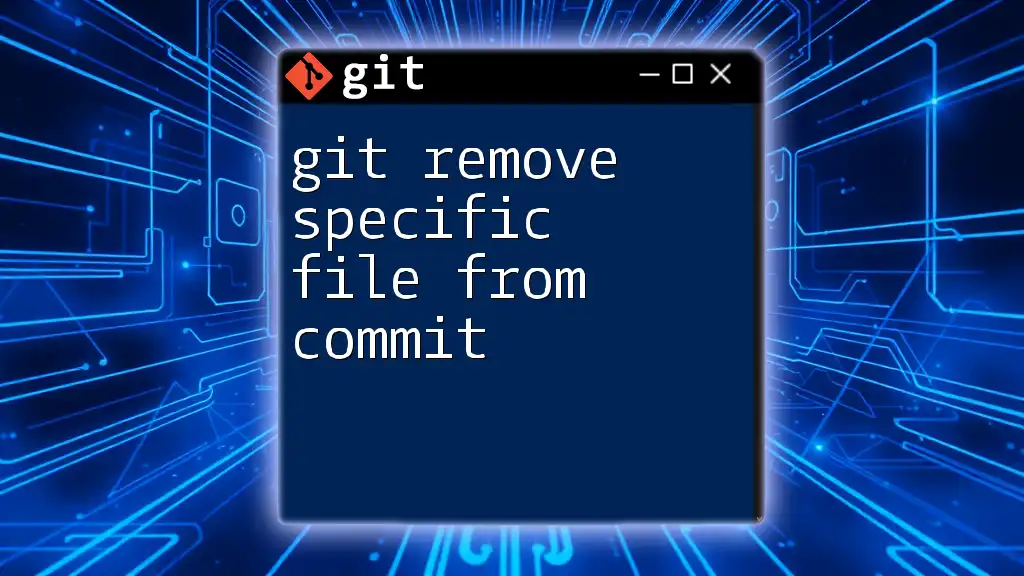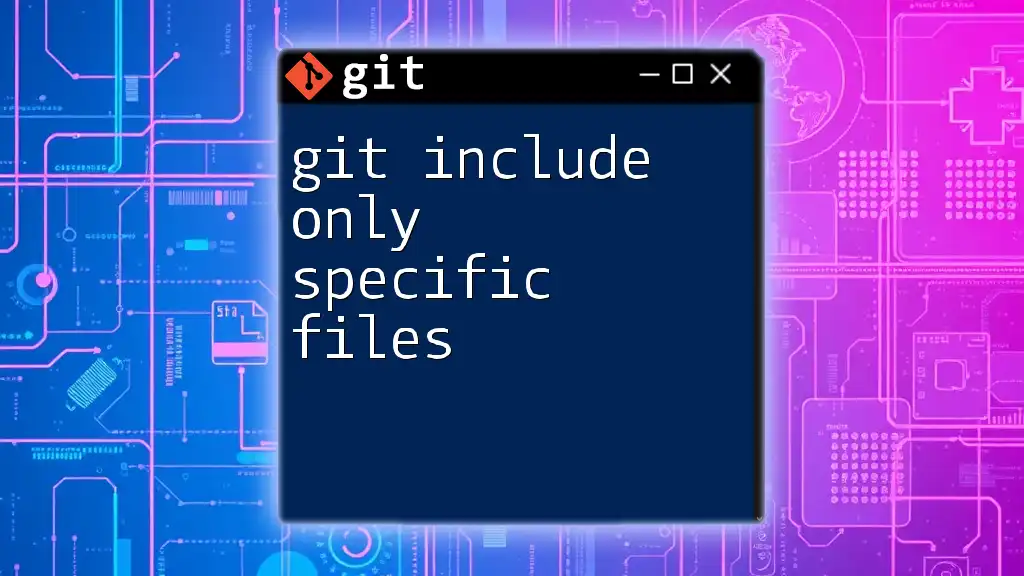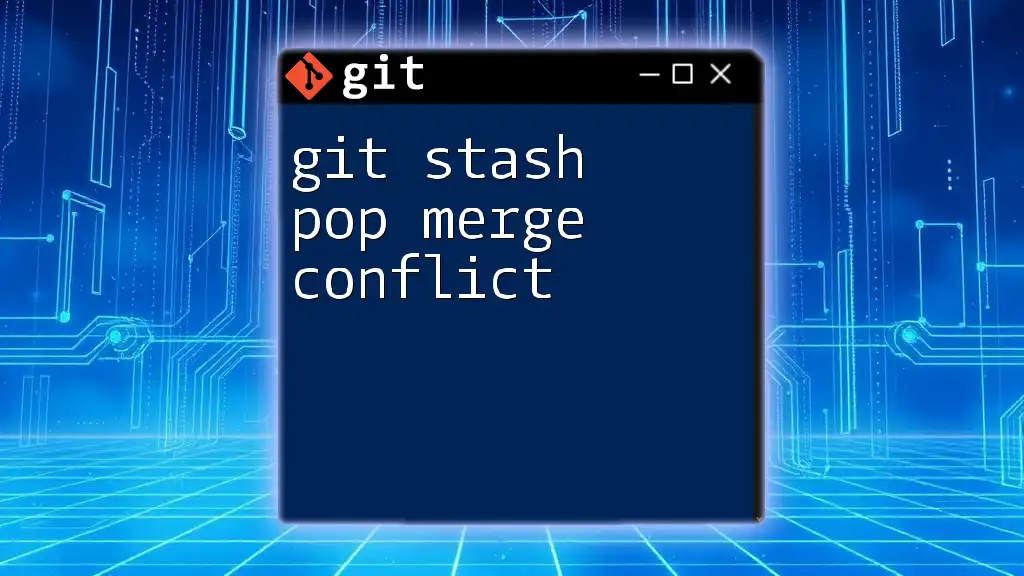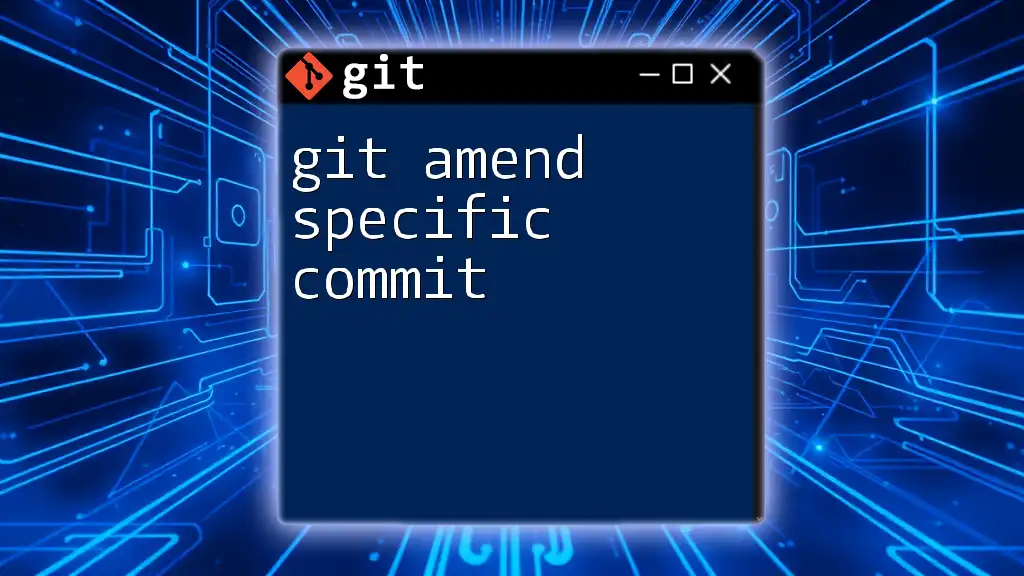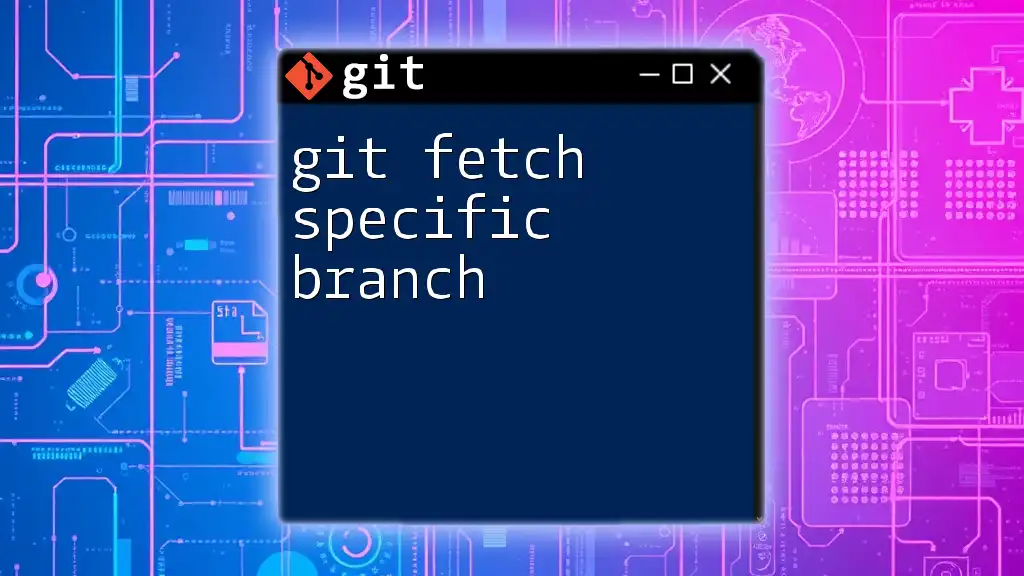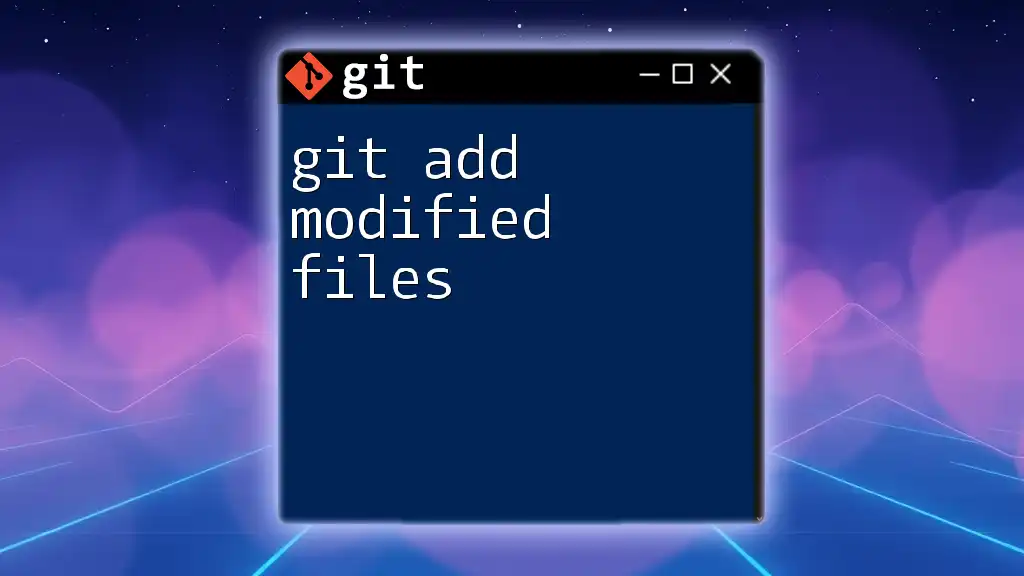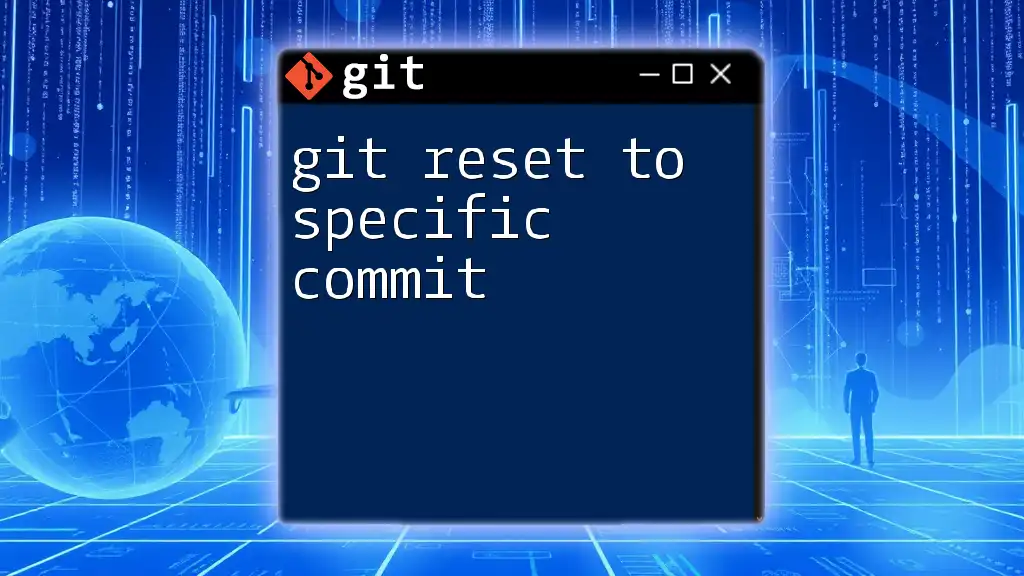The `git stash pop` command restores changes from the stash, but you can only pop specific files by first applying the stash and then checking out the desired files, as Git does not directly support popping specific files from the stash.
Here's how you can do it:
git stash apply stash@{0} -- <file1> <file2>
git stash drop stash@{0} # optional, to remove the stash after applying
Understanding Git Stash
What is Git Stash?
Git Stash is a powerful feature that allows developers to temporarily save changes that are not yet ready to be committed. When you have uncommitted modifications in your working directory and you need to switch branches or pull updates, stashing enables you to save your current work without losing it. This is particularly useful in situations where a quick switch is necessary, and you want to ensure that your modifications are kept safe.
How Git Stash Works
When you run the `git stash` command, Git saves your uncommitted changes (both tracked and staged files) in a stack-like structure, allowing you to apply them later. The stashed changes are stored in a stash list, which can contain multiple entries, allowing you to revisit them as needed. The commands related to this feature are essential for efficient version control.
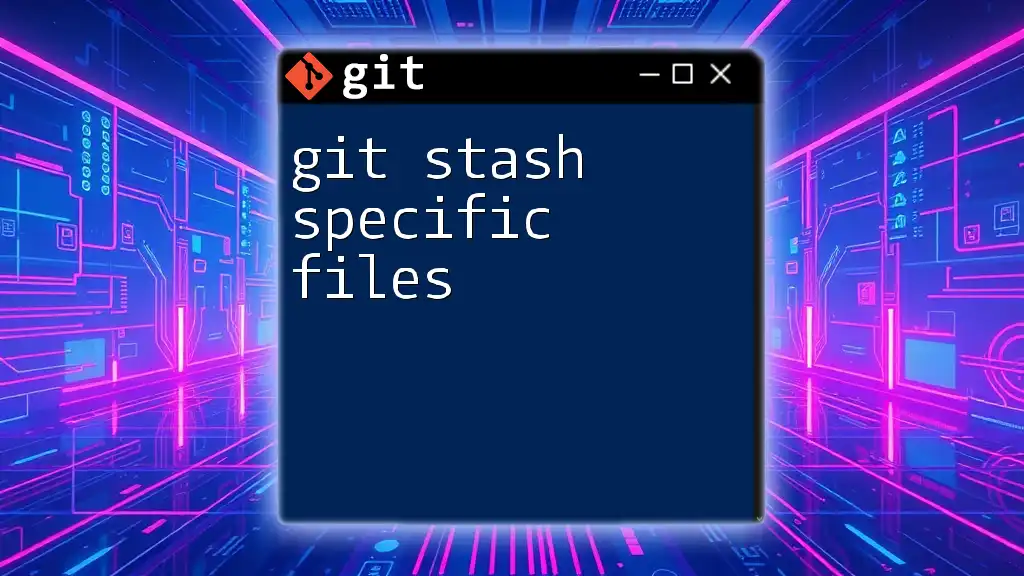
Common Scenarios for Using `git stash pop`
When to Use `git stash pop`
The command `git stash pop` is commonly employed when you want to retrieve the most recent stash entry and apply it back onto your current working branch. This is often necessary after switching branches or performing a clean operation. Unlike `git stash apply`, `git stash pop` not only applies changes but also removes the stash from the list, making it a more streamlined choice when you no longer need the stashed changes.
Limitations of `git stash pop`
While `git stash pop` is efficient, it’s important to note that it inherently applies all changes contained in the selected stash entry. This means if the stash contains changes for multiple files, all of them will be reapplied to your working directory, which could introduce unwanted changes if you are only interested in specific files. Therefore, understanding the implications of this command is crucial to prevent merge conflicts and unintended modifications.
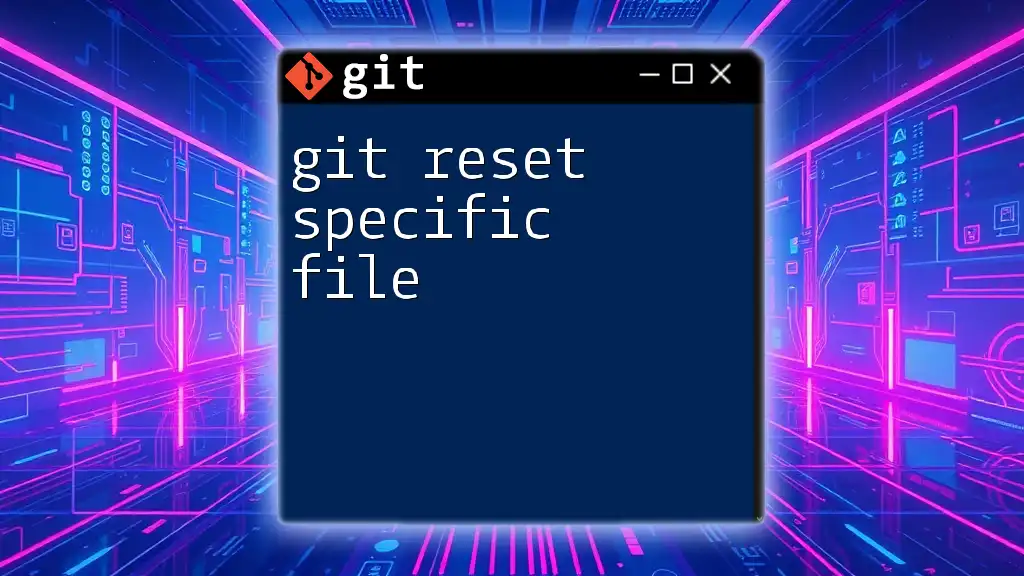
Popping Specific Files from Stash
Understanding `git stash pop` Behavior
By default, `git stash pop` does not offer the functionality to apply specific files directly. If you find yourself in a situation where you only want to retrieve changes from select files, you need to utilize a workaround. Understanding how to manage your stash entries and apply only what you need can greatly enhance your workflow.
Using `git checkout` with Stash
The commonly accepted method for popping specific files from your stash involves using the `git checkout` command in conjunction with the stash reference identifier.
Steps to Pop Specific Files
To pop specific files, start by listing your stash entries to identify the desired stash reference. Use the following commands:
git stash list
Once you have located the stash entry (e.g., `stash@{0}`), you can selectively apply files using:
git checkout stash@{0} -- path/to/file1 path/to/file2
This command retrieves only the specified files from the stash and applies them directly into your working directory.
Example Scenario
Imagine you have a situation where you made changes to both `file1.txt` and `file2.txt`, but you only wish to apply the modifications for `file1.txt`. After stashing your changes, execute the following commands to retrieve only the first file:
git stash
git checkout stash@{0} -- file1.txt
This allows you to maintain your workflow without pulling in unwanted changes from `file2.txt`.
Leveraging Branches
Creating a Temporary Branch
If you want more control over your changes, consider creating a temporary branch. This method prevents potential issues caused by popping various files directly into your main working branch.
To create and switch to a new branch, use:
git checkout -b temp-branch
This will help isolate the changes you're about to pop, giving you ample space to review them before merging back into your main branch.
Popping Files into the Temporary Branch
Once you have your temporary branch set up, apply the desired files from the stash with:
git checkout stash@{0} -- path/to/specificFile.txt
This way, you can address any conflicts or changes in the temp-branch before deciding to incorporate them back.
Cleaning Up
Removing the Stash Entry
After you have successfully popped the specific files you want, it is essential to tidy up your stash entries to prevent clutter. Use the following command to drop the stash entry you no longer need:
git stash drop stash@{0}
By cleaning up your stash, you help maintain a more organized workflow, reducing confusion during future operations.
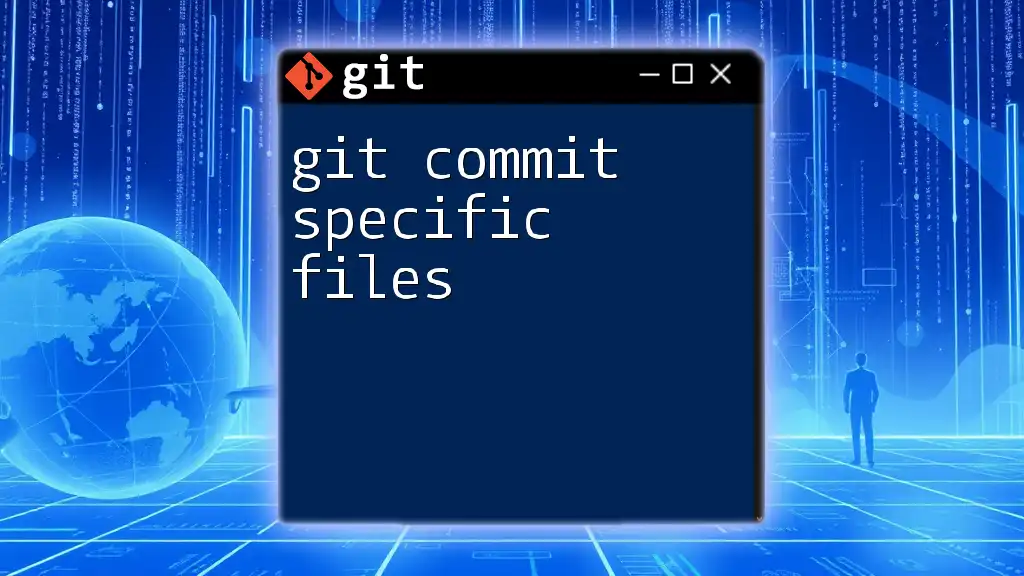
Best Practices When Using `git stash pop` for Specific Files
Maintain a Clean Working Directory
To optimize your workflow with Git, strive to maintain a clean working directory. Frequent commits allow for less reliance on stashing, leading to a smoother version control experience.
Considerations for File-Specific Operations
Before stashing changes, take a moment to review what you are about to stash. Clear descriptive messages on your stash entries enable easier navigation later on. This practice can save time and prevent errors when retrieving specific changes.
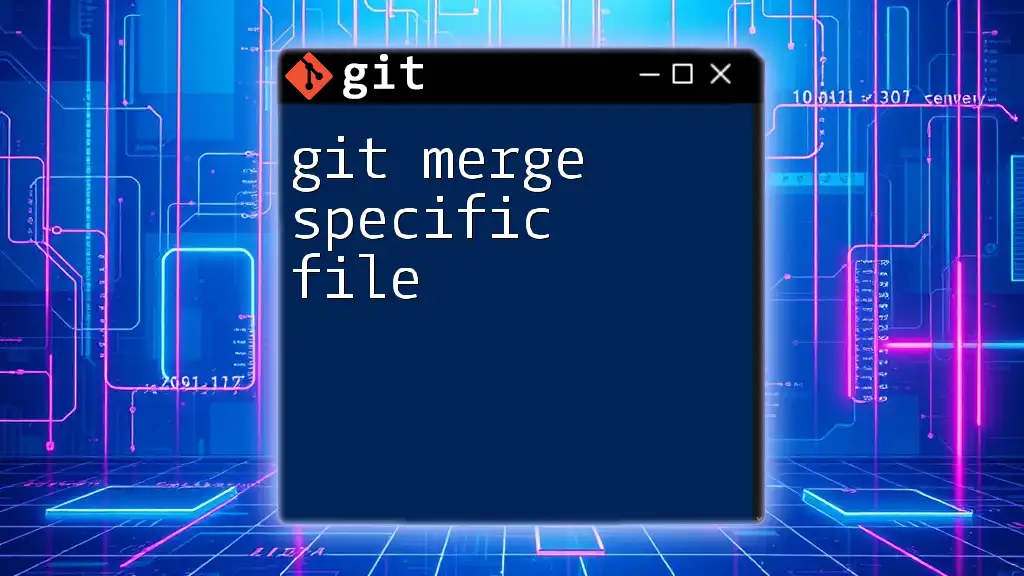
Conclusion
In summary, mastering the use of `git stash pop specific files` provides immense flexibility and efficiency in your Git practices. By understanding how Git Stash operates, utilizing temporary branches, and focusing on best practices, you can refine your development processes and handle changes with confidence.
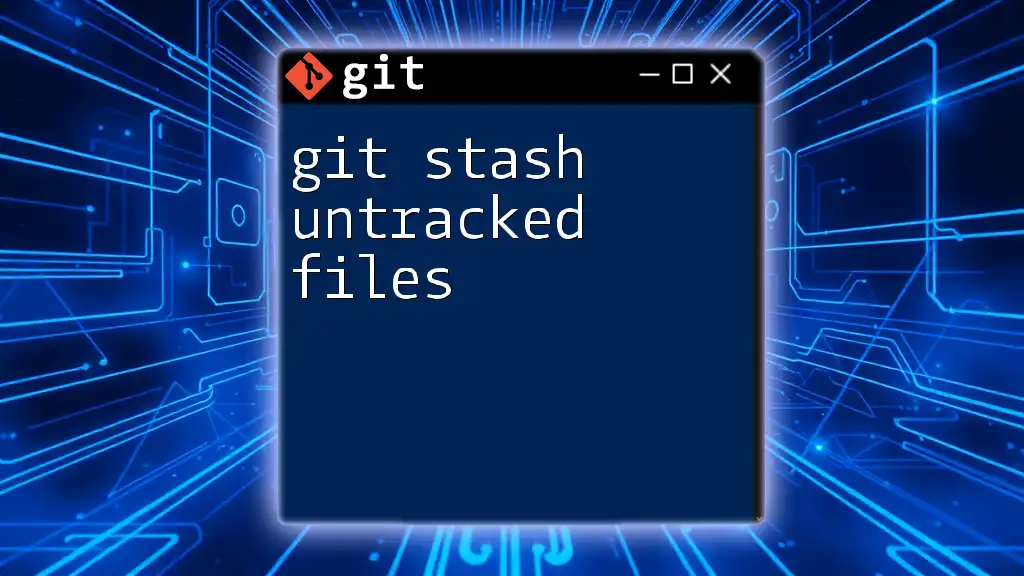
Additional Resources
For further development, consider exploring the official Git documentation, which can provide in-depth insights, or look into recommended books and tutorials that focus on Git best practices. Stay tuned to our blog for more quick and concise tips to enhance your Git skills.

